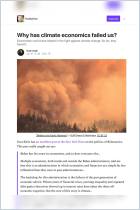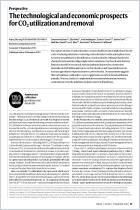
The Future Costs of Methane Emissions
An analysis of the costs of climate change caused by adding one tonne of methane to the atmosphere finds that high-income regions of the world should spend much more on efforts to lower such emissions than should low-income regions.
Read or listen offline
Recommendation
By comparing the human costs of climate change with actual monetary losses, a research group determined that the world’s high-income communities should pay more to reduce greenhouse gas emissions than poorer populations. In this Nature article, James K. Hammitt, a professor of economics and decision sciences at Harvard University, analyzes the value “SC-CH4” used by the researchers to pursue more precise measurements of the social costs and detrimental changes caused by greenhouse gas emissions over time. The study points toward a more equitable, effective way to pay for climate change effects worldwide.
Take-Aways
About the Author
James K. Hammitt is a professor of economics and decision sciences at the Center for Risk Analysis at the T.H. Chan School of Public Health, Harvard University.
















Comment on this summary or 开始讨论